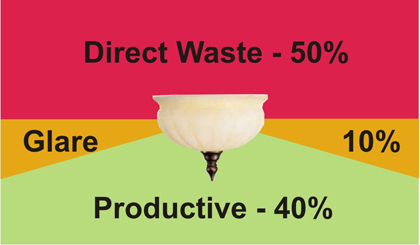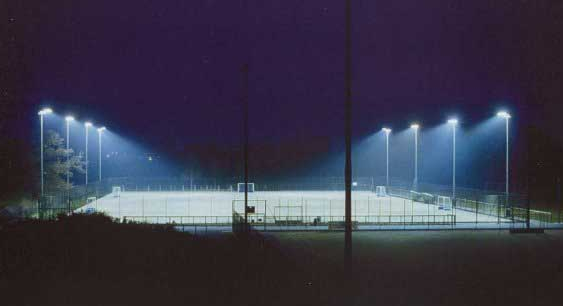
Night lighting should be provided for areas that require added
safety and/or security. Pedestrian walkways are a common example
where lighting may be needed for safety. Base entry points are
common areas where lighting is needed for security. While necessary
at the several locations across
an AF Base, night lighting, if improperly designed can have multiple
negative affects.
Light greatly impacts the sleep habits of humans and animals, particularly nocturnal species. Lighting designs should not only consider the areas where light is required but areas where light should be avoided.
- Light greatly impacts the sleep habits of humans and animals,
particularly nocturnal species. Lighting designs should not only
consider the areas where light is required but areas where light
should be avoided.
- Use motion sensors wherever possible in order to save energy
- Light fixtures should be chosen which cast light on the
intended area only, akin to full cutoff luminaires.
- Low-level lighting is an efficient method to light walkways.
- Placement of lighting should avoid proximity to homes
(especially windows) and animal habitats where feasible.
- Avoid casting light on reflective surfaces.

Figure 1. Unfriendly outdoor lighting percentages
The above graphic depicts typical light emissions from outdoor lighting. Please note that a full 50% of light emitted and energy consumed never makes contact with the ground resulting in light pollution. The ‘glare zone’ is not only a waste of energy but can reduce night time visibility. Uplighting as shown in this example should be avoided and discouraged as only a small amount of the energy consumed is converted into usable light.

Figure 2. Lighting fixtures can direct illumination down to minimize light pollution
Light fixture and lamp technology has advanced exponentially over the last decade. Compact fluorescent lamps and LED light bulbs, for example, not only reduce electrical expenses but also have a longer lifespan when compared to conventional lamp designs. The directional nature of LED light bulbs are ideal for use in recessed lights or downlight wall sconces.
 Sustainable night lighting techniques are a potential strategy to
achieve the intent of LEED SS Credit
8. Refer to the LEED Guidance
section for specific requirements. Sustainable night lighting techniques are a potential strategy to
achieve the intent of LEED SS Credit
8. Refer to the LEED Guidance
section for specific requirements.
Figure 3. NyteWatch motion controlled security light

|

